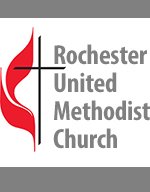From there he set out and went away to the region of Tyre. He entered a house and did not want anyone to know he was there. Yet he could not escape notice, but a woman whose little daughter had an unclean spirit immediately heard about him, and she came and bowed down at his feet. Now the woman was a Gentile, of Syrophoenician origin. She begged him to cast the demon out of her daughter. He said to her, “Let the children be fed first, for it is not fair to take the children’s food and throw it to the dogs.” But she answered him, “Sir, even the dogs under the table eat the children’s crumbs.” Then he said to her, “For saying that, you may go—the demon has left your daughter.” So she went home, found the child lying on the bed, and the demon gone.
Then he returned from the region of Tyre, and went by way of Sidon towards the Sea of Galilee, in the region of the Decapolis. They brought to him a deaf man who had an impediment in his speech; and they begged him to lay his hand on him. He took him aside in private, away from the crowd, and put his fingers into his ears, and he spat and touched his tongue. Then looking up to heaven, he sighed and said to him, “Ephphatha,” that is, “Be opened.” And immediately his ears were opened, his tongue was released, and he spoke plainly. Then Jesus ordered them to tell no one; but the more he ordered them, the more zealously they proclaimed it. They were astounded beyond measure, saying, “He has done everything well; he even makes the deaf to hear and the mute to speak.”
Did You Know? —Sources, “The New Interpreters Bible Commentary on Mark; The Harper Collins Study Bible (New Revised Standard Version)
• Reference to children implies the children of Israel should be fed first. Suggests possibility of a Gentile mission or Jesus and the disciples.
• Theme of bread crumbs may reflect unrest between Jewish farmers producing food for wealthy Gentile cities in times of food shortages.
• Text challenges how church treats people on the outside of its table.
• In the end, the miracle is a story of overcoming prejudice.
• Written soon after first Jewish war with Rome which began 66 CE and saw the destruction of the Temple in 70 CE.
• Mark focuses on teaching, discipleship and the suffering of Jesus.
Some Thoughts on Today’s Reading: Mark 7: 24-37
The Gospel of Mark is notable for its simple and direct wording. There is a need, however, for some “reading between the lines” that is not unusual for the Gospel texts. These were rough and suffering times for the lost sheep of Israel. Even the Messiah, God the Son, spoke in code from time to time as he taught in the middle of government and religious oppression. Rome was ready to pounce on anyone who didn’t obey Cesar. The Pharisees and Scribes followed Jesus about eager to find fault with him. Jesus was adept at speaking in ways suffering people of the time would understand and rulers would struggle to take issue with.
These stories in Mark 7: 24-37 are likely examples. Jesus is taking care to speak to his initial followers and note he understands their suffering at the hands of Rome and outsiders. His first responsibility is to them. The engagement with the Gentile woman, however, concludes with a healing. Prejudice is overcome. The outsider is welcome.
In the second healing in the text, Jesus gently and respectfully takes a deaf man aside from the crowds and heals him. “Be opened,” Jesus says, after touching the man’s ears and tongue. He directs witnesses to tell no one of the miracle but word spreads. Who is this man who heals with a touch and a word and opens ears to hear and enables those unable to speak have voice?
How do the stories in Mark 7:24-37 speak to us today? Who do we exclude from the church table? What do we fail to hear in the Messiah’s teachings? Where are our voices?
Grace and Peace,
Pastor Pam

Rev. Pam Brokaw pastors both the Rochester and Oakville United Methodist Churches.
She is a graduate of the Seattle University School of Theology and Ministry, where she earned her Masters in Divinity.
